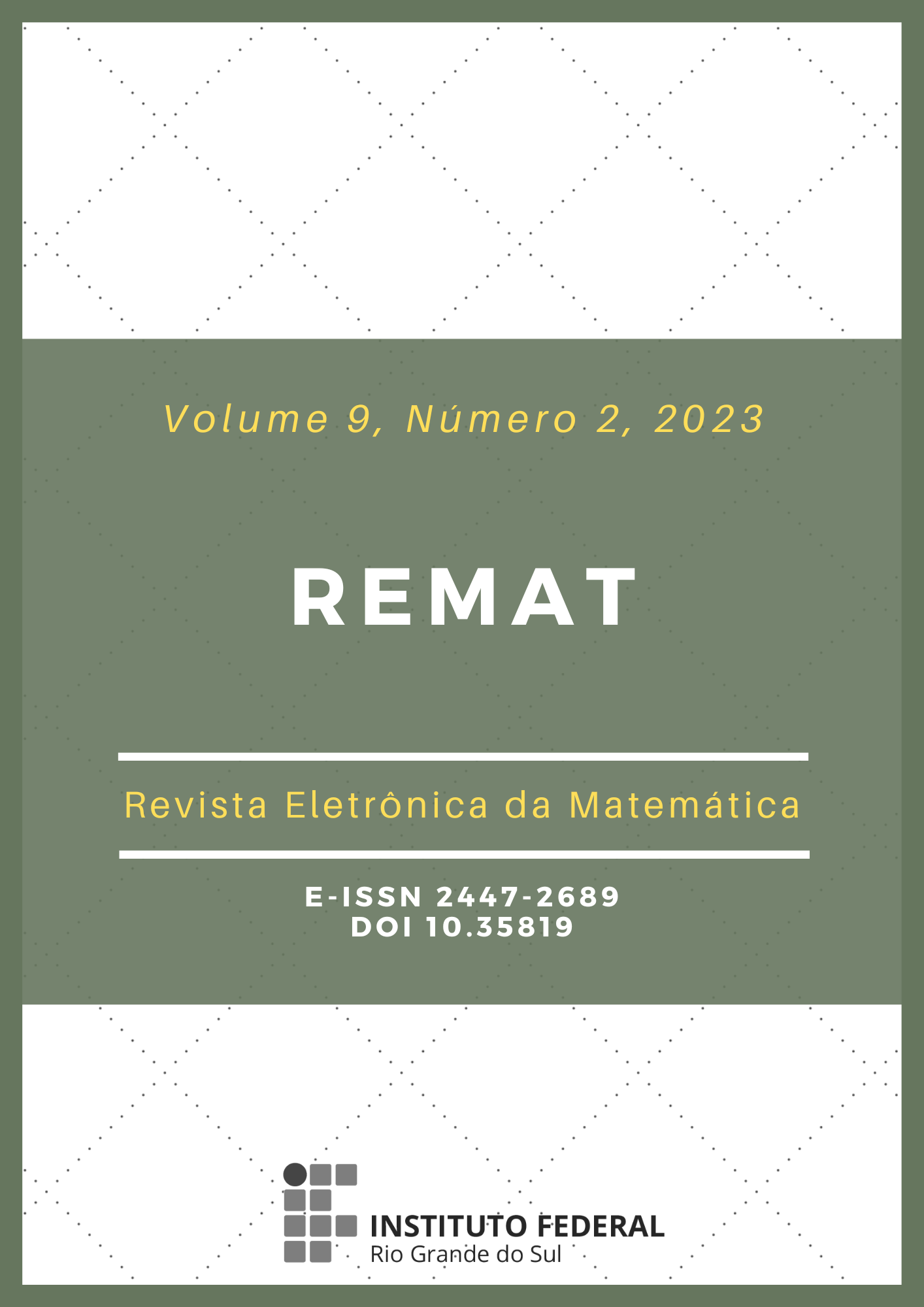Numerical algorithms for simulation and optimization of bioreactors with multiple elementary reactions
DOI:
https://doi.org/10.35819/remat2023v9i2id6919Keywords:
matrix algorithm, multiple reactions, reaction calculationAbstract
Alongside the technological advances of the last decades, there was an increase in the demand for electric energy, which cannot be supplied by the actually employed processes. Among the emerging alternatives to supply the increasing consumption is the biogas, with the advantage of being produced from organic residues generated by an exponentially growing population. The study of bioreactors is, in this panorama, essential to, not only soften the growing crisis, but to optimize the processes actually employed. Thus, the main objective of this paper was to create algorithms that automate the simulation of different types of reactors, starting with the ones subjected to multiple elementary reactions, but which can be updated in the future to deal with multiple simultaneous microbiological reactions. These algorithms were developed in Scilab, a free software, and the obtained results were compared with the ones available in the literature, obtaining numerical convergence, which indicates their effectiveness.
Downloads
References
BORGES, F. Q. Crise de energia elétrica no Brasil: uma breve reflexão sobre a dinâmica de suas origens e resultados. RECIMA21, Jundiaí, SP, v. 2. n. 10, p. e210809, 2021. DOI: https://doi.org/10.47820/recima21.v2i10.809.
DATTA, B. N. Numerical Linear Algebra and Applications. 1. ed. New York: Brooks/Cole Publishing Company, 1995.
FOGLER, H. S. Elements of Chemical Reaction Engineering. 4. ed. Upper Saddle River: Pearson Education, 2006.
FOGLER, H. S.; GÜRMEN, M. N. Elements of Chemical Reaction Engineering: Strategies for Creative Problem Solving Website. 4th Edition Team. 2008. University of Michigan. Disponível em: http://umich.edu/~elements/. Acesso em: 1 out. 2018.
GAVIN, H. P. The Levenberg-Marquardt method for nonlinear least squares curve-fitting problems. Department of Civil and Environmental Engineering, Duke University. 2022. Disponível em: https://people.duke.edu/~hpgavin/ExperimentalSystems/lm.pdf. Acesso em: set. 2023.
GRIVA, I.; NASH, S. G.; SOFER, A. Linear and Nonlinear Optimization. 2. ed. Philadelphia: Society for Industrial and Applied Mathematics, 2009.
MICHELON, M. Algoritmos numéricos para simulação e otimização de biorreatores com múltiplas reações elementares. Orientadora: Juliana Fronza. Coorientadora: Marlene Guevara dos Santos. 2018. 45 p. Monografia (Especialização em Qualificação Docente em Ciências Naturais e Matemática) – Universidade Estadual do Rio Grande do Sul, Bento Gonçalves, RS, 2018.
RANGANATHAN, A. The Levenberg-Marquardt Algorithm. Honda Research Institute. 2004. Disponível em: http://www.ananth.in/Notes_files/lmtut.pdf. Acesso em: 19 out. 2018.
SOBRINHO, L. H. R. da S. Estudo para aplicação da tecnologia de aproveitamento energético de resíduos sólidos urbanos: um estudo de caso para o município de Magé/RJ. Orientador: Amaro Olímpio Pereira Junior. 2021. 109 f. Dissertação (Mestrado em Planejamento Energético) ? Instituto Alberto Luiz Coimbra de Pós-graduação e Pesquisa de Engenharia, Universidade Federal do Rio de Janeiro, Rio de Janeiro, RJ, 2021. Disponível em: https://www.ppe.ufrj.br/images/publica%C3%A7%C3%B5es/mestrado/Disserta%C3%A7%C3%A3o_Luiz_Henrique_Sobrinho.pdf. Acesso em: 28 dez. 2023.
VIEIRA, H. G.; POLLI, H. Q. O Biogás como fonte alternativa de energia. Revista Interface Tecnológica, Taquaritinga, SP, v. 17, n. 1, p. 388-400, 2020. DOI: https://doi.org/10.31510/infa.v17i1.766.
Downloads
Published
Issue
Section
License
Copyright (c) 2023 REMAT: Revista Eletrônica da Matemática

This work is licensed under a Creative Commons Attribution 4.0 International License.
REMAT retains the copyright of published articles, having the right to first publication of the work, mention of first publication in the journal in other published media and distribution of parts or of the work as a whole in order to promote the magazine.
This is an open access journal, which means that all content is available free of charge, at no cost to the user or his institution. Users are permitted to read, download, copy, distribute, print, search or link the full texts of the articles, or use them for any other legal purpose, without requesting prior permission from the magazine or the author. This statement is in accordance with the BOAI definition of open access.













 https://orcid.org/0000-0002-0893-7426
https://orcid.org/0000-0002-0893-7426


















